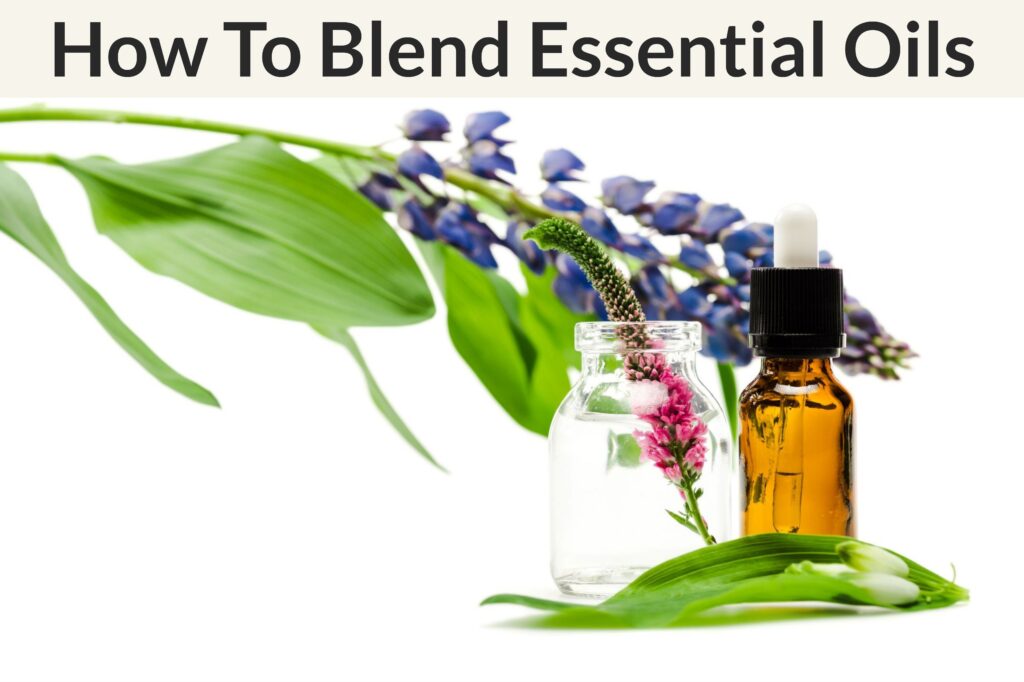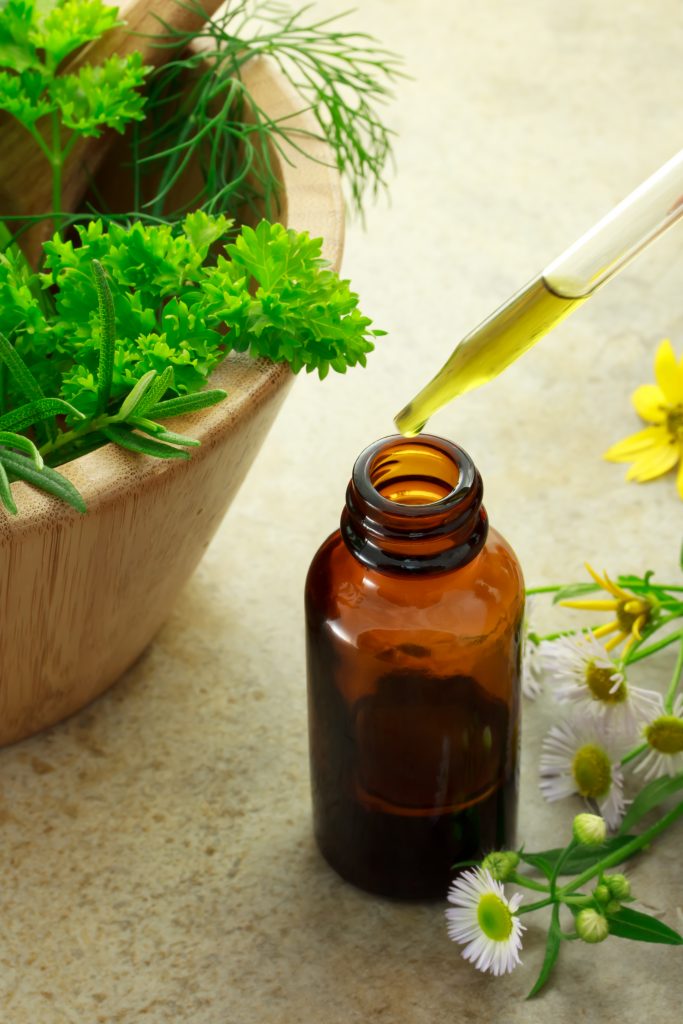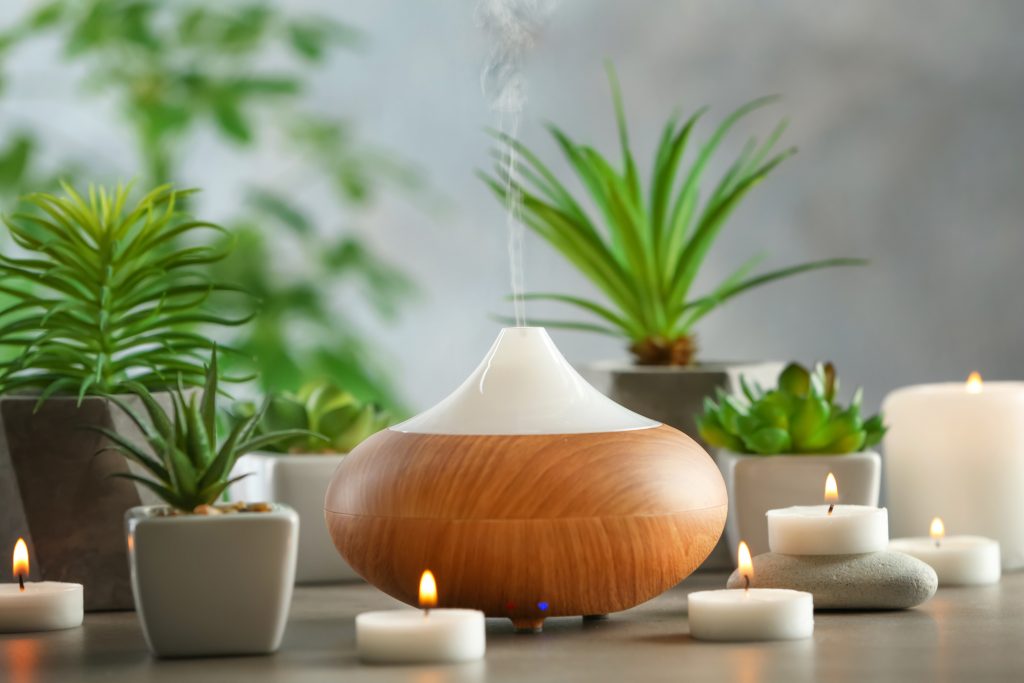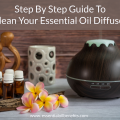Blending essential oils is a great way to experiment beyond standard usage of single essential oils. You can create new aromas for use in aromatherapy, in a diffuser, in making candles and much more.
The blending of essential oils is not simply a matter of arbitrarily mixing portions of different oils and hope you end up with something decent. It is both an art and a science! Well, I would say that it is!
It requires creativity and a good sense of smell to identify the different notes which will determine the success of your experiment. Have you heard that “the best recipe for health is to apply sweet scents to the brain”.
With some tips and guidance, anyone can blend essential oils; some people will make up blends for the sheer pleasure of the aroma, i.e. its fragrance whilst others will do so primarily for therapeutic benefits.
In this guide, I bare it all, showing you how to mix and match essential oils to achieve the perfect combination. Whether you want to create exotic scents or expand your essential oils artistry, this guide is for meant for you…And remember, essential oils are truly one of nature’s greatest gifts to mankind!
The Science Behind Blending Essential Oils
As I mentioned, blending essential oils is both an art and a science. Mastering both is important in getting your blends right and achieving the aroma you seek.
Let me start off with the science, which provides an important knowledge foundation on how different oils behave and how to mix them for optimal effect.
Understanding scent notes
You may have come across the term ‘notes’ in commercial perfumes or essential oil blends. Scents are made up of notes. These are the ones you recognize or identify with your nose.
When blending essential oils, you must take into account the different notes and how they will affect your final blend. The three levels of scent notes are described in detail below.
1. Top/head notes
Do you recognize that immediate scent that wafts up to your nose when you apply a perfume? Those are the head notes and they create an initial impression of your essential oil blend.
Top notes are created by essential oils of high volatility, meaning they evaporate quicker than other lower-volatility oils.
Some of the essential oils that produce head notes include citrus, ginger, cinnamon, lemon and grapefruit. When blending, include an essential oil that produces a strong initial scent that sets the mood for your blend.
2. Middle/heart notes
Just before the volatile top notes dissipate, another more subtle scent emerges. This scent is made up of the middle or heart notes that emerge towards the end of head notes.
Middle notes last longer than top notes and form the main body of the blend. Therefore, you should choose an essential oil whose scent you love and can enjoy for a longer period of time.
Essential oils like lavender, rose, chamomile, nutmeg and pine are often used as middle notes.
3. Base notes
One function of middle notes is to mask the initial scent of base notes. By the time middle notes are slowly dispersing away, which could take up to an hour depending on the blend recipe, the base notes have matured enough to stand on their own.
The base notes have the longest impression and can last anywhere from several hours to several days, depending on the quality of the essential oil you are using. As they age, the base notes become rich and heavy. Some oils that create base notes include patchouli, cedarwood, frankincense, myrrh and vanilla among others.
When blending essential oils, the trick is to include an essential oil from each of the above categories. The result is an aroma that is stunning, rich (yet subtle) and lasts long.
Mixing with water and carrier oils
Some recipes call for mixing essential oils with either water or a carrier oil when creating a blend.
I always recommend mixing essential oils with carrier oils for topical applications as undiluted (neat) application of essential oils can cause adverse skin reactions.
With water
Mixing essential with water presents a bit of a conundrum! If you remember your elementary science, oils and water do not mix, and the oil will float on top. In a blend, you want everything to mix uniformly, which can be a problem when a recipe calls for water. What’s the secret?
Well, one solution is to use dispersants. These are ingredients which allow oil and water to mix fairly uniformly. The best dispersants are commercial-grade meaning they contain chemicals which I never recommend you add to your blends.
Are there natural alternatives? Indeed, there are, but they may not be as effective but they can help by a great deal.
Some good dispersants include sea salt, baking soda, aloe gel, sugar, diatomaceous earth (food grade) and honey. The best way to use these dispersants is to put a small amount in a bowl then add the required number of essential oil drops. Mix and then add water on top.
One downside is that dispersants may dull your blend’s flavor and aroma to some extent. An alternative to dispersants is an emulsifier. Common emulsifiers include castor oil, alcohol and coconut emulsifier.
With carrier oils
You’ll agree that mixing essential oils with carrier oils is pretty straightforward and the resulting blend will form a homogeneous (uniform) mixture. All you have to do is to follow a recipe and making sure to add the right amount of carrier oil to dilute the essential oil.
The Art Behind Blending
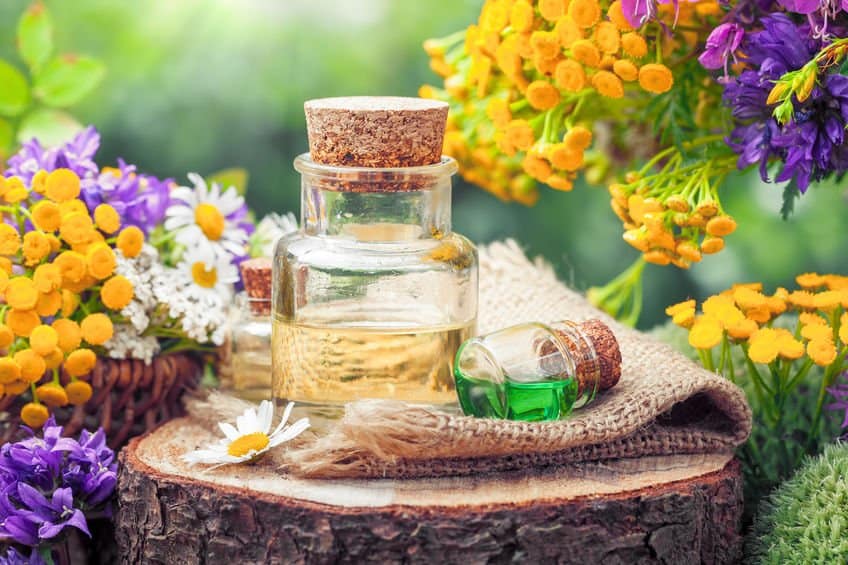
Now onto the art of blending essential oils: here I’ll explain what you’ll need, what oils to use, how to blend and finally, how to store your blends safely.
1. Supplies
Each recipe will require different supplies. So check your recipe first (if you are using one), to determine what equipment and supplies are needed for the blending.
The ones I have listed below are the basic ones that are used in preparing most types of blends.
- Storage containers for the final blend. There are various types of glass storage cases sold online including roll-on bottles, dropper bottles, and so on.
- Stirring rods for uniform mixing and an electric mixer for larger batches.
- Gloves to protect your hands and safety glasses to protect your eyes from accidental splashes.
- Mixing bowls. Use a glass bowl. Plastic is not recommended.
- Distilled water, if your recipe requires it.
- Carrier oils such as coconut, sweet almond, olive oil, jojoba, etc. whichever one your recipe requires.
- Paper towels to wipe up spills.
- Glass measuring cups.
- Essential oils to be blended.
- Dispersants such as salt when blending oil with water.
- Alcohol if your recipe requires it.
- Anything else listed in the recipe.
First thing first: you’ll have to decide for what purpose you want to use the resultant blend for and how will you use this blend? Once you have answered these questions, go ahead and start your blending journey.
I strongly recommend starting your preparation a few days before the big day (if that is applicable).
Once you decide what recipe you are going to follow (your own recipe, my myriad of recipes or any other recipe), find out all the supplies you’ll need. This period is also helpful in researching any safety issues associated with the essential oils you are going to use.
A day before the blending is due, make sure you have all your supplies in place and ready to go. This way, you will be able to get straight into blending the oils without running errands trying to secure final supplies.
If you are following your own recipe, make sure you understand the basics on scent notes and complimentary oils as described above. This will help you choose the right combinations of oils.
A relaxation blend will be different from a perfume blend. A floral blend for a romantic dinner can contain lavender or jasmine while an earthy blend to help you sleep may consists of patchouli or valerian oil. I have come up with some examples of blends created based on complimentary essential oils, intended use and final scent.
2. Blending
So now you are ready to mix the essential oils and carrier oils. Make sure you are working in a large enough area with no distractions and with enough light to help you see your concoction.
If you are a beginner, I would advise starting small. Just use say three essential oils and one carrier oil if you plan to use the blend on your skin, i.e. topically.
Categorize the oils based on notes – base notes, middle notes and head notes. Begin with just 10 drops split among the three essential oils.
A rule which I stand by and use regularly is the 30-50-20 percentage rule: 3 drops of the top note, 5 drops of the middle note and 2 drops of the base note. Do not just lump them in together; there is a method to the chaos.
Start with the base notes, then add the middle notes and top off with the highly volatile top notes. Changing this sequence will change the final blend and produce a different result.
If you are following a recipe that calls for different measurements, follow those. You can use a dropper to add the correct number of drops. For larger scale applications, you can measure essential oils is in an ml-calibrated measuring cup or beaker.
Once you have mixed them up, carry out the initial sniff test and see whether you like the aroma. To get the true scent however, let the blend rest for 24-48 hours as this allows the various constituents in each essential oil to blend perfectly. You can then smell the blend and judge the results. If it is not what you wanted, start over again.
Let’s assume you are now in love with your blend that has matured to perfection. What’s next! At this point, you can dilute the blend by adding several drops of carrier oil to it, be it grapeseed oil, almond oil, olive oil, jojoba oil, and as much as possible, one without a strong scent as you don’t want to alter your lovely scent. By mixing up one drop of your blend to 9 drops of carrier oil, you’ll end up with a 10% dilution.
3. Storage
How you store your custom blends depends on what you plan to use them. If you want to use the blend as a perfume, store it in a glass roll-on bottle or one with an orifice reducer.
For use in a diffuser, candle making or spray bottle, store the blends in a glass bottle. Additionally, never use rubber caps as they can disintegrate over time due to exposure with essential oils.
You can then use a few drops at a time in your bath water, diffuser, candles, spray bottle or inhaler.
Most essential oils can last for 12 months or more as long if you are buying top quality essential oils from a reputable company. If you blend with distilled water, the shelf life is shortened. If that is the case, keep the blend in the fridge and use within 4 weeks.
Essential Oil Scents That Complement Each Other
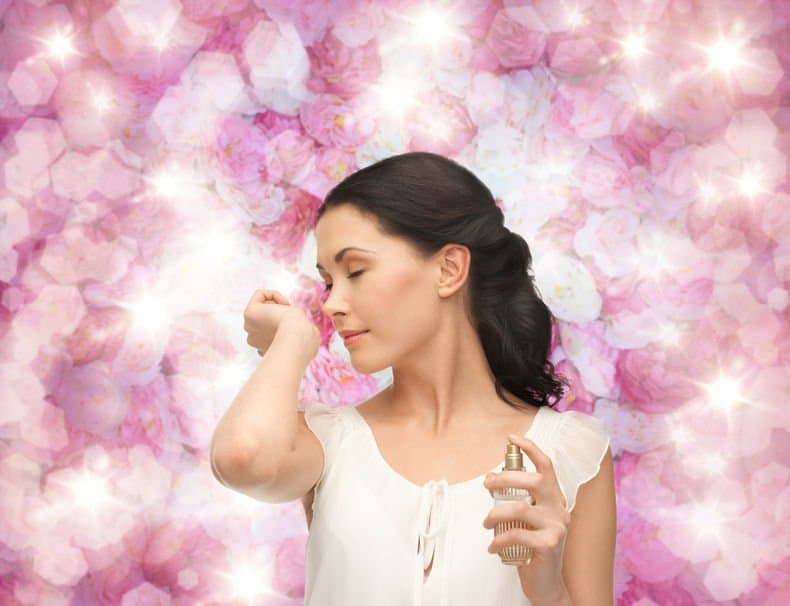
Just remember that there are no right or wrong when it comes to blends as each nose will smell/understand scents differently. As a guide, you can start off by grouping essential oils into similar smelling categories as follows. One more thing – essential oils in a particular group blend well with each other and complement their properties.
Based on my findings over the years, I have found that citrus essential oils go well with spicy and floral ones. Herbal and citrus combine well and woody and floral complement each other in harmony. Minty oils are great to combine with citrus, woody and herbal.
Examples of essential oils in each category
- Floral scent: jasmine, lavender, rose, ylang, geranium, vanilla
- Citrus scent: grapefruit, lemon, lime, neroli, orange, tangerine, bergamot,
- Spicy scent: clove, ginger, cinnamon
- Woody scent: sandalwood, frankincense, juniper, patchouli, cedarwood, vetiver, cypress
- Herbal scent: eucalyptus, sage, chamomile, tea tree, thyme, peppermint, marjoram
- Minty scent: spearmint, peppermint
Examples Of Essential Oil Blends To Use In A Diffuser
This guide will not be complete without listing several examples of essential oil blends you can make at home. They are easy and ideal for both beginners and pros and can be used in various ways such as in your diffuser, wear as your favorite perfume, add a few drops to moisturizer and much more!
Recipe 1 – For relaxation and sleep
6 drops of grapefruit, 4 drops of ginger and 2 drops of sandalwood. Add the blend to a diffuser to help wind down after a long day or go to sleep. You can also blend 8 drops of lavender, 2 drops of palmarosa and 2 drops of rose geranium oil. More recipes on relaxation and sleep, please click here.
Recipe 2 – For energy and focus
4 drops of peppermint and 4 drops of orange essential oils. A good alternative is 4 drops lavender, 8 drops grapefruit, 4 drops of lemon oil and 2 drops basil. Click here for more recipes on energy and focus.
Recipe 3 – For a man cave scent
3 drops of bergamot, 3 drops of cypress and 3 drops of arborvitae. An alternative recipe consists of 2 drops of wintergreen, 2 drops of cypress and 2 drops of white fir.
Recipe 4 – For a Christmas seasonal blend
4 drops of patchouli, 4 drops of cinnamon, 3 drops of orange, 2 drops of clove and 1 drop of ylang ylang. If you are after other seasonal, occasional, holiday or other blends, just drop me a line and I will come up with one for you. Click here for more recipes on Christmas blend.
Recipe 5 – For skincare
3 drops rosemary oil, 2 drops of rose hip seed oil and 4 tablespoons of grapeseed oil for dilution. You can mix this blend with any homemade skincare product and use on your skin. Another blend to mix with your homemade scrub is 3 drops ylang ylang oil, 3 drops bergamot oil and 1 cup coconut oil. Click here for more recipes on skin care.
Recipe 6 – For Tranquility
3 drops orange, 5 drops chamomile, 2 drops patchouli or a blend of 4 drops bergamot, 6 drops lavender, 3 drops patchouli.
Recipe 7 – For Detox
5 drops Grapefruit, 9 drops lavender, 4 drops Patchouli. Click here for more recipes on detox.
Recipe 8 – For Anti-anxiety
3 drops bergamot, 5 drops lavender, 3 drops sandalwood. Click here for more recipes on anxiety treatment.
A Few Words On Safety
Safety has to be taken seriously when handling essential oils. Despite being natural compounds, essential oils are very potent and can pose various safety hazards. Before you embark on your blending journey, it is essential to understand what you are getting into and take necessary safety precautions.
Essential oils including lavender, chamomile are generally safe. A few others should be used with more caution. Once you decide which essential oils you are going to use, find out safety information on each of them.
For example:
- Cardamom seed oil should not be used around very young kids as it has been known to cause breathing issues.
- Undiluted peppermint if used topically can cause adverse reactions on the skin, especially in high concentration.
- Lemon can cause phototoxicity (skin damage when exposed to light) if too much is used.
- Lemongrass is known to be allergenic and should be used at very low concentrations (less than 0.5%).
- Eucalyptus should not be used in children younger than 2.
These are just a few of the safety risks some essential oils carry. Read the safety instructions to understand the pros and cons of each essential oil prior to use. Always mix the essential oils with a carrier oil before application.
Check whether an essential oil blend can be used topically, orally or inhaled. Consult your doctor before ingesting any essential oils.
Another very important rule for pregnant ladies and breastfeeding mums is to abstain from using essential oils to be on the safe side. Additionally, if you are suffering from a chronic medical condition, consult your doctor before using essential oils.
Recommended Essential Oil Blends
My own blends of pure essential oils l’orpur which comes in a complimentary carry bag have already been mixed to perfection using exact quantities of pure essential oils to bring out the full scent/fragrance and therapeutic properties of the essential oils individually and as one blend.
Therefore, there is nothing that you need to do except use them in your favorite way! Click here to read more information about L’orpur Essential Oil Blends Kit.
The Final Word
Feel free to trial beyond these recipes and create your own custom blends. As long as you follow safety precautions and are knowledgeable about the essential oils you use, you can experiment as much as you want.
On the other hand, I have all the hard work for you (saving you time and money along the way) and you can have access to a full selection of pre-blended essential oils in the l’orpur 5 blends kit.

